| Srl | Item |
| 1 |
ID:
127076
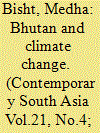

|
|
|
|
|
| Publication |
2013.
|
| Summary/Abstract |
The paper seeks to understand Bhutan's climate diplomacy and to identify the strategic implications of climate change for Bhutan. The implications are scaled at the national and the regional levels. The impact of climate change is studied within the broader analytical framework of the threats posed and the opportunities offered to Bhutan in the context of regional politics. The main argument is that India-Bhutan cooperation on climate change needs to be synchronized with the co-benefit approach, which India has been articulating at the national level. This approach, it is argued, will go a long way towards evolving a 'nuanced' approach in contemporary environmental diplomacy.
|
|
|
|
|
|
|
|
|
|
|
|
|
|
|
|
| 2 |
ID:
094345
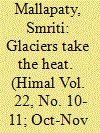

|
|
|
| 3 |
ID:
113084
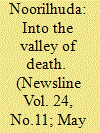

|
|
|
| 4 |
ID:
181953
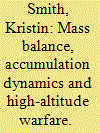

|
|
|
|
|
| Summary/Abstract |
Since 1984 the Indian and Pakistani armies have been locked in the world’s highest war on Siachen Glacier in the Karakoram Himalaya. This remote location is the world’s only nuclear trijunction as well as a source of drinking water for significant portions of India and Pakistan, and its possession is considered by both governments to be key to their national security. In the past, alpine battles were fought predominantly on glaciers with a precipitation-dominated accumulation type; Siachen, however, gains most of its new ice mass from avalanches and icefalls. This has presented unique challenges in tactics and logistics, rendering many of the strategies of modern conventional warfare useless, and the style of mountain warfare these challenges have produced has impacted both the combatants and the glacier itself. Existing literature on Siachen, while it discusses the verticality of the conflict, has done little to analyze the singular nature of warfare on a high-altitude glacier with an avalanche-heavy accumulation type. This paper draws on USGS Landsat data, glaciological mass balance studies, hydrological studies, firsthand combat accounts and historical reviews of the region to examine the unique tactics, logistics and impact of warfare on Siachen Glacier.
|
|
|
|
|
|
|
|
|
|
|
|
|
|
|
|
| 5 |
ID:
095327


|
|
|
| 6 |
ID:
139819
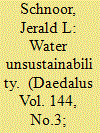

|
|
|
|
|
| Summary/Abstract |
Water is a vital renewable resource that is increasingly stressed by multiple and competing demands from people, industry, and agriculture. When water becomes unavailable or unusable, life itself cannot be sustained. Changes in supply and demand for water are driven by population growth, climate change, and our energy and land use choices. Poverty frequently precludes the ability of many people to respond and adapt to water insecurity. In this essay, we discuss the effects of these drivers on the diminution of rivers, aquifers, glaciers, and the severe pollution that renders some water resources unusable. While technologies for water reuse, desalination, aquifer replenishment, and better water pricing are important solutions, the recognition of water as a profoundly threatened resource and as a basic human right is essential for providing sustainable water for future generations.
|
|
|
|
|
|
|
|
|
|
|
|
|
|
|
|